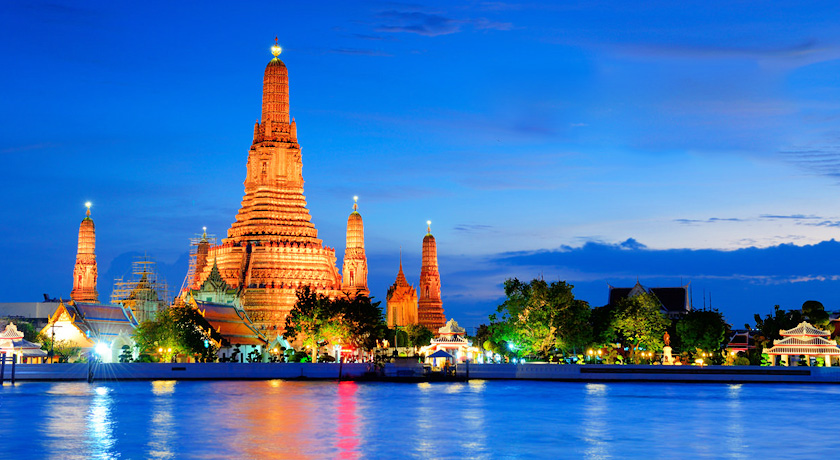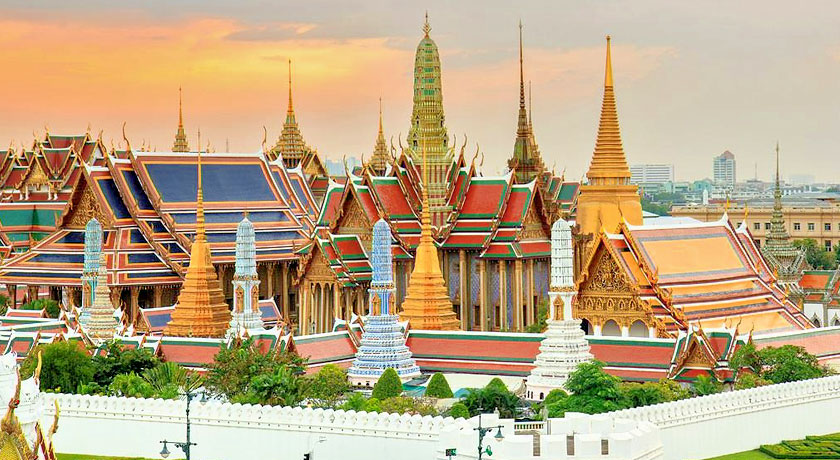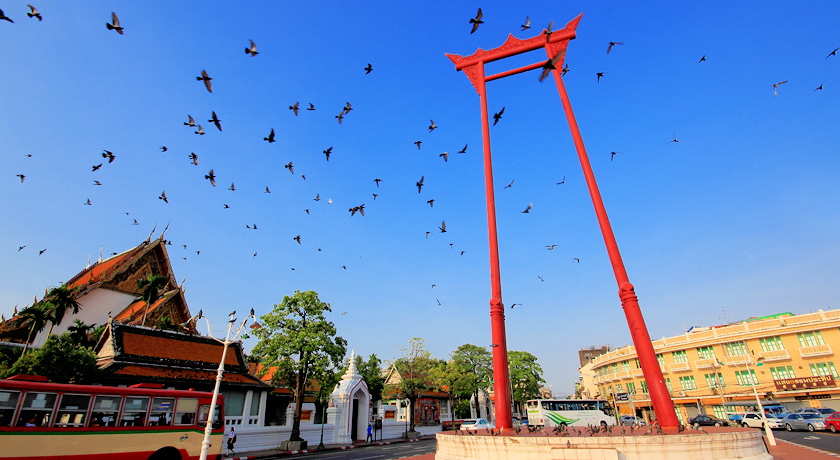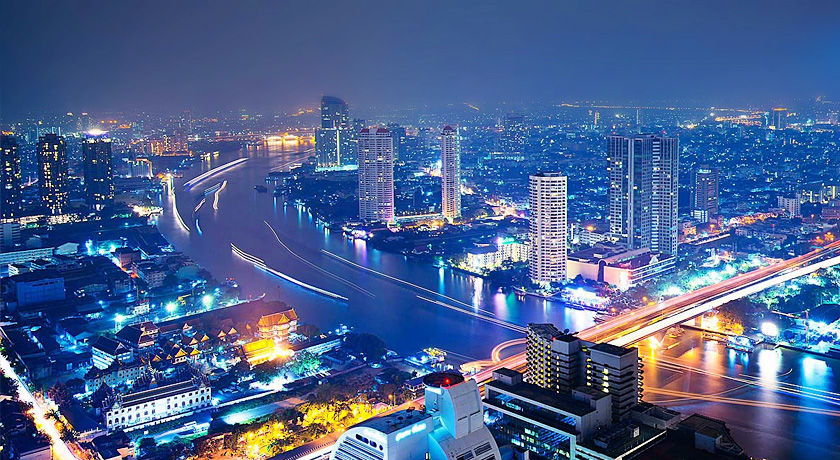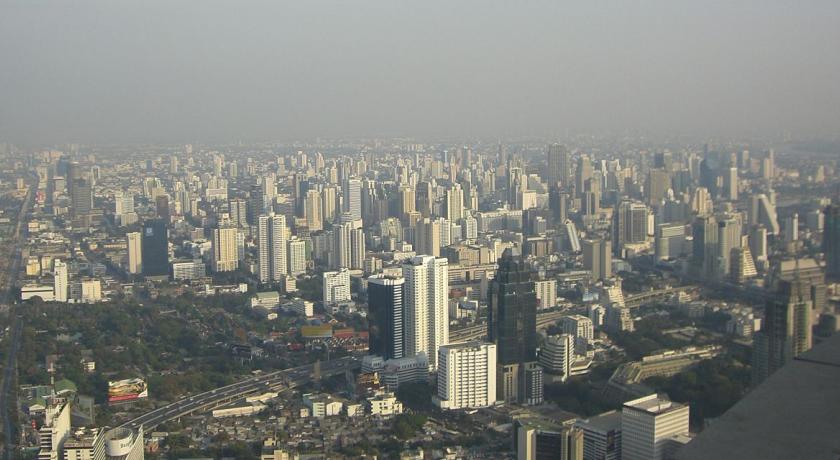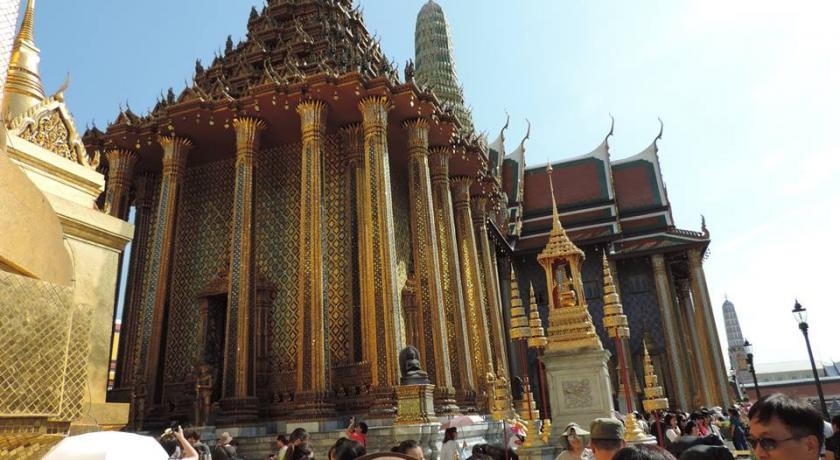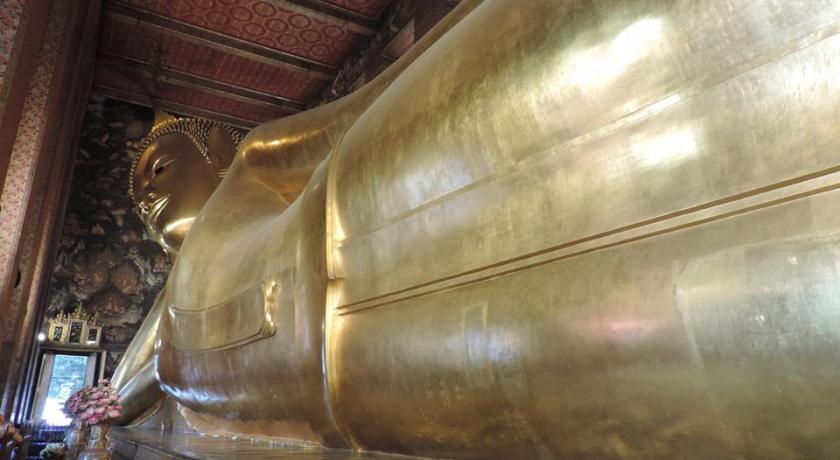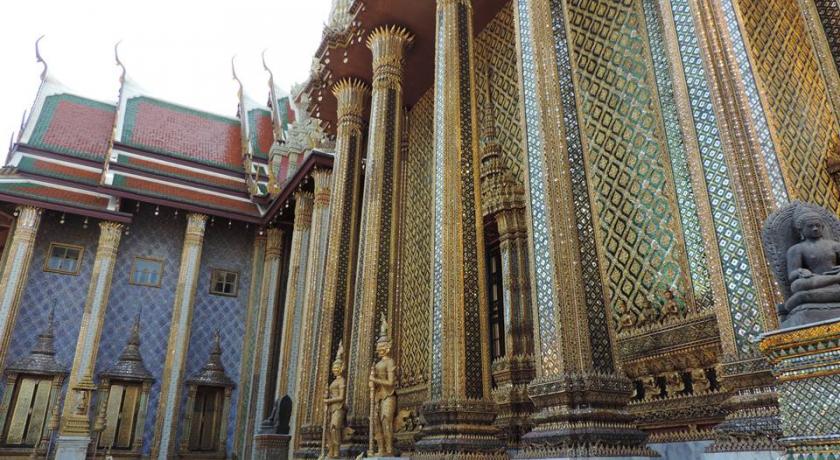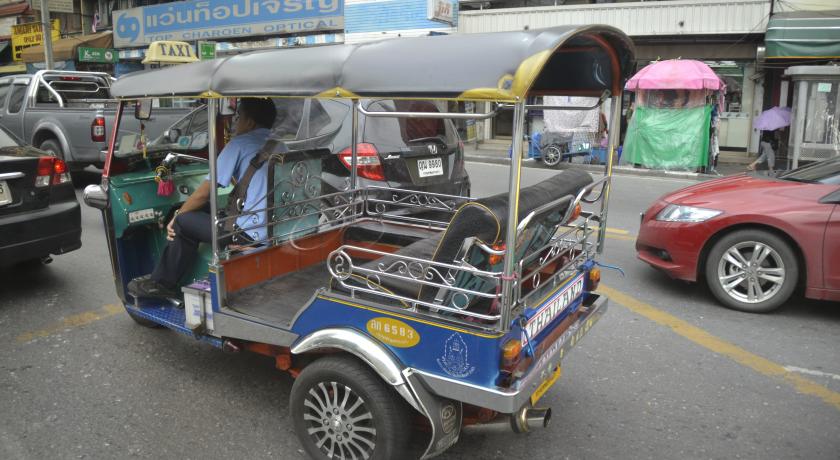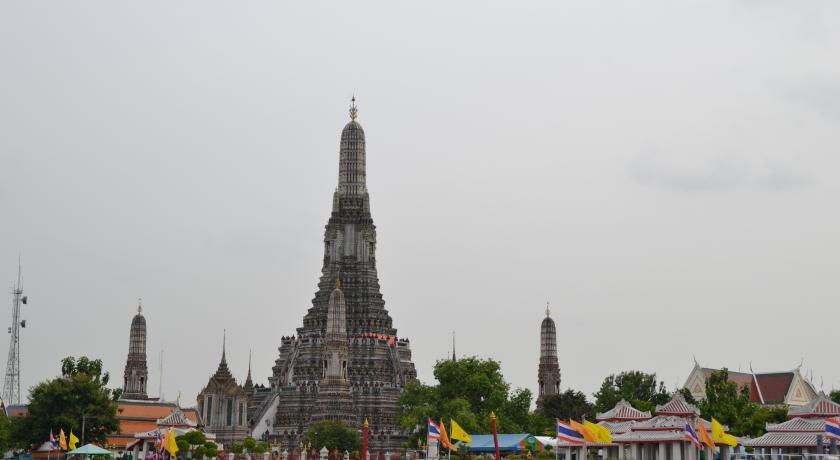Guide description
Bangkok is the capital and most populous city of Thailand. It is known in Thai as Krung Thep.
Bangkok traces its roots to a small trading post during the Ayutthaya Kingdom in the 15th century, which eventually grew in size and became the site of two capital cities: Thonburi in 1768 and Rattanakosin in 1782. Bangkok was at the heart of Siam's (as Thailand used to be known) modernization, during the later 19th century, as the country faced pressures from the West. The city was the centre of Thailand's political struggles, throughout the 20th century, as the country abolished absolute monarchy, adopted constitutional rule and underwent numerous coups and several uprisings. The city grew rapidly during the 1960s through the 1980s and now exerts a significant impact among Thailand's politics, economy, education, media and modern society.
The Asian investment boom in the 1980s and 1990s led many multinational corporations to locate their regional headquarters in Bangkok. The city is now a major regional force in finance and business. It is an international hub for transport and health care, and has emerged as a regional centre for the arts, fashion and entertainment. The city is well known for its vibrant street life and cultural landmarks, as well as its notorious red-light districts. The historic Grand Palace and Buddhist temples including Wat Arun and Wat Pho stand in contrast with other tourist attractions such as the nightlife scenes of Khaosan Road and Patpong. Bangkok is among the world's top tourist destinations. It is named the most visited city in MasterCard's Global Destination Cities Index, and was named "World's Best City" for four consecutive years by Travel + Leisure magazine.
Bangkok's rapid growth amidst little urban planning and regulation has resulted in a haphazard cityscape inadequate infrastructure systems. Limited roads, despite an extensive expressway network, together with substantial private car usage, have resulted in chronic and crippling traffic congestion. This in turn caused severe air pollution in the 1990s. The city has since turned to public transport in an attempt to solve this major problem. Four rapid transit lines are now in operation, with more systems under construction or planned by the national government and the Bangkok Metropolitan Administration.
History
The history of Bangkok dates at least to the early 15th century, when it was a village on the west bank of the Chao Phraya River, under the rule of Ayutthaya. Because of its strategic location near the mouth of the river, the town gradually increased in importance. Bangkok initially served as a customs outpost with forts on both sides of the river, and became the site of a siege in 1688 in which the French were expelled from Siam. After the fall of Ayutthaya to the Burmese Empire in 1767, the newly declared King Taksin established his capital at the town, which became the base of the Thonburi Kingdom. In 1782, King Phutthayotfa Chulalok (Rama I) succeeded Taksin, moved the capital to the eastern bank's Rattanakosin Island, thus founding the Rattanakosin Kingdom. The City Pillar was erected on 21 April, which is regarded as the date of foundation of the present city.
Bangkok's economy gradually expanded through international trade, first with China, then with Western merchants returning in the early-to-mid 19th century. As the capital, Bangkok was the centre of Siam's modernization as it faced pressure from Western powers in the late 19th century. The reigns of Kings Mongkut (Rama IV, 1851–68) and Chulalongkorn (Rama V, 1868–1910) saw the introduction of the steam engine, printing press, rail transport and utilities infrastructure in the city, as well as formal education and healthcare. Bangkok became the centre stage for power struggles between the military and political elite as the country abolished absolute monarchy in 1932. It was subject to Japanese occupation and Allied bombing during World War II, but rapidly grew in the post-war period as a result of United States developmental aid and government-sponsored investment. Bangkok's role as an American military R&R destination boosted its tourism industry as well as firmly establishing it as a sex tourism destination. Disproportionate urban development led to increasing income inequalities and unprecedented migration from rural areas into Bangkok; its population surged from 1.8 to 3 million in the 1960s. Following the United States' withdrawal from Vietnam in 1973, Japanese businesses took over as leaders in investment, and the expansion of export-oriented manufacturing led to growth of the financial market in Bangkok. Rapid growth of the city continued through the 1980s and early 1990s, until it was stalled by the 1997 Asian financial crisis. By then, many public and social issues had emerged, among them the strain on infrastructure reflected in the city's notorious traffic jams. Bangkok's role as the nation's political stage continues to be seen in strings of popular protests, from the student uprisings in 1973 and 1976, anti-military demonstrations in 1992, and successive anti-government demonstrations by the "Yellow Shirt", "Red Shirt" and "Light blue Shirt" movements from 2008 onwards.
Administration of the city was first formalized by King Chulalongkorn in 1906, with the establishment of Monthon Krung Thep Phra Maha Nakhon (ÓĖĪÓĖōÓĖæÓĖźÓĖüÓĖŻÓĖĖÓĖćÓ╣ĆÓĖŚÓĖ×ÓĖ×ÓĖŻÓĖ░ÓĖĪÓĖ½ÓĖ▓ÓĖÖÓĖäÓĖŻ) as a national subdivision. In 1915 the monthon was split into several provinces, the administrative boundaries of which have since further changed. The city in its current form was created in 1972 with the formation of the Bangkok Metropolitan Administration (BMA), following the merger of Phra Nakhon Province on the eastern bank of the Chao Phraya and Thonburi Province on the west during the previous year.
Tourism attractions
Bangkok is one of the world's top tourist destination cities. MasterCard ranked Bangkok as the global top destination city by international visitor arrivals in its Global Destination Cities Index, with 15.98 million projected visitors in 2013. The city is ranked fourth in cross-border spending, with 14.3 billion dollars projected for 2013, after New York, London and Paris. Euromonitor International ranked Bangkok sixth in its Top City Destinations Ranking for 2011. Bangkok was also named "World's Best City" by Travel + Leisure magazine's survey of its readers for four consecutive years, from 2010 to 2013. As the main gateway through which visitors arrive in Thailand, Bangkok is visited by the majority of international tourists to the country. Domestic tourism is also prominent. The Department of Tourism recorded 26,861,095 Thai and 11,361,808 foreign visitors to Bangkok in 2010. Lodgings were made by 15,031,244 guests, who occupied 49.9 percent of the city's 86,687 hotel rooms.
Bangkok's multi-faceted sights, attractions and city life appeal to diverse groups of tourists. Royal palaces and temples as well as several museums constitute its major historical and cultural tourist attractions. Shopping and dining experiences offer a wide range of choices and prices. The city is also famous for its dynamic nightlife. Although Bangkok's sex tourism scene is well known to foreigners, it is usually not openly acknowledged by locals or the government.
Among Bangkok's well-known sights are the Grand Palace and major Buddhist temples, including Wat Phra Kaew, Wat Pho, and Wat Arun. The Giant Swing and Erawan Shrine demonstrate Hinduism's deep-rooted influence in Thai culture. Vimanmek Mansion in Dusit Palace is famous as the world's largest teak building, while the Jim Thompson House provides an example of traditional Thai architecture. Other major museums include the Bangkok National Museum and the Royal Barge National Museum. Cruises and boat trips on the Chao Phraya and Thonburi's canals offer views of some of the city's traditional architecture and ways of life on the waterfront.
Shopping venues, many of which are popular with both tourists and locals, range from the shopping centres and department stores concentrated in Siam and Ratchaprasong to the sprawling Chatuchak Weekend Market. Taling Chan Floating Market is among the few such markets in Bangkok. Yaowarat is known for its shops as well as street-side food stalls and restaurants, which are also found throughout the city. Khao San Road has long been famous as a backpackers' destination, with its budget accommodation, shops and bars attracting visitors from all over the world.
Bangkok has a reputation overseas as a major destination in the sex industry. Although prostitution is technically illegal and is rarely openly discussed in Thailand, it commonly takes place among massage parlours, saunas and hourly hotels, serving foreign tourists as well as locals. Bangkok has acquired the nickname "Sin City of Asia" for its level of sex tourism.
Issues often encountered by foreign tourists include scams, overcharging and dual pricing. In a survey of 616 tourists visiting Thailand, 7.79 percent reported encountering a scam, the most common of which was the gem scam, in which tourists are tricked into buying overpriced jewellery. And Tuk Tuk (motorised Rickshaw) drivers insisting on taking you to gem and fabric stores.
Transport
Although Bangkok's canals historically served as a major mode of transport, they have long since been surpassed in importance by land traffic. Charoen Krung Road, the first to be built by Western techniques, was completed in 1864. Since then, the road network has vastly expanded to accommodate the sprawling city. A complex elevated expressway network helps bring traffic into and out of the city centre, but Bangkok's rapid growth has put a large strain on infrastructure, and traffic jams have plagued the city since the 1990s. Although rail transport was introduced in 1893 and electric trams served the city from 1894 to 1968, it was only in 1999 that Bangkok's first rapid transit system began operation. Older public transport systems include an extensive bus network and boat services which still operate on the Chao Phraya and two canals. Taxis appear in the form of cars, motorcycles, and "tuk-tuk" auto rickshaws.
Bangkok is connected to the rest of the country through the national highway and rail networks, as well as by domestic flights to and from the city's two international airports. Its centuries-old maritime transport of goods is still conducted through Khlong Toei Port.
The BMA is largely responsible for overseeing the construction and maintenance of the road network and transport systems through its Public Works Department and Traffic and Transportation Department. However, many separate government agencies are also in charge of the individual systems, and much of transport-related policy planning and funding is contributed to by the national government.
Roads
Road-based transport is the primary mode of travel in Bangkok. Due to the city's organic development, its streets do not follow an organized grid structure. Forty-eight major roads link the different areas of the city, branching into smaller streets and lanes (soi) which serve local neighbourhoods. Eleven bridges over the Chao Phraya link the two sides of the city, while several expressway and motorway routes bring traffic into and out of the city centre and link with nearby provinces.
Bangkok's rapid growth in the 1980s resulted in sharp increases in vehicle ownership and traffic demand, which have since continued—in 2006 there were 3,943,211 in-use vehicles in Bangkok, of which 37.6 percent were private cars and 32.9 percent were motorcycles.These increases, in the face of limited carrying capacity, were expressed as severe traffic congestion evident by the early 1990s. The extent of the problem is such that the Thai Traffic Police has a unit of officers trained in basic midwifery in order to assist deliveries which do not reach hospital in time. While Bangkok's limited road surface area (8 percent, compared to 20–30 percent in most Western cities) is often cited as a major cause of its traffic jams, other factors, including high vehicle ownership rate relative to income level, inadequate public transport systems, and lack of transportation demand management, also play a role. Efforts to alleviate the problem have included the construction of intersection bypasses and an extensive system of elevated highways, as well as the creation of several new rapid transit systems. The city's overall traffic conditions, however, remain bad.
Traffic has been the main source of air pollution in Bangkok, which reached serious levels in the 1990s. However, efforts to improve air quality by improving fuel quality and enforcing emission standards, among others, have been largely successful. Atmospheric particulate matter levels dropped from 81 micrograms per cubic metre in 1997 to 43 in 2007.
Although the BMA has created thirty signed bicycle routes along several roads totalling 230 kilometres (140 mi) cycling is still largely impractical, especially in the city centre. Most of these bicycle lanes share the pavement with pedestrians. Poor surface maintenance, encroachment by hawkers and street vendors, and a hostile environment for cyclists and pedestrians, make cycling and walking unpopular methods of getting around in Bangkok.
Buses and taxis
Bangkok is the location of Hua Lamphong Railway Station, the main terminus of the national rail network operated by the State Railway of Thailand (SRT). In addition to long-distance services, the SRT also operates a few daily commuter trains running To and from the outskirts of the city during the rush hour.
Bangkok is currently served by three rapid transit systems: the BTS Skytrain, the underground MRT and the elevated Airport Rail Link. Although proposals for the development of rapid transit in Bangkok had been made since 1975, it was only in 1999 that the BTS finally began operation.
The BTS consists of two lines, Sukhumvit and Silom, with thirty stations along 30.95 kilometres (19.23 mi). The MRT opened for use in July 2004, and currently consists of one line, the Blue Line. It runs for 20 kilometres (12 mi) and has eighteen stations, three of which connect to the BTS system. The Airport Rail Link, more recently opened in August 2010, is operated by the SRT and connects the city centre to Suvarnabhumi Airport to the east. Its eight stations span a distance of 28 kilometres (17 mi).
Although initial passenger numbers were low and their service area remains limited to the inner city, these systems have become indispensable to many commuters. The BTS reported an average of 600,000 daily trips in 2012, while the MRT had 240,000 passenger trips per day.
The BTS has had two route extensions since its opening. As of 2012, construction work is being done to extend the southwest and southeast ends of the BTS, as well as double the length of the Blue MRT line. Several additional transit lines are also under construction, including the northward Purple Line and the Light Red grade-separated commuter rail line, to be run by the SRT. The entire Mass Rapid Transit Master Plan in Bangkok Metropolitan Region consists of eight main lines and four feeder lines totalling 508 kilometres (316 mi) to be completed by 2029. In addition to rapid transit and heavy rail lines, there have been proposals for several monorail systems.
Water transport
Although much diminished from its past prominence, water-based transport still plays an important role in Bangkok and the immediate upstream and downstream provinces. Several water buses serve commuters daily. The Chao Phraya Express Boat serves thirty-four stops along the river, carrying an average of 35,586 passengers per day in 2010, while the smaller Khlong Saen Saep boat service serves twenty-seven stops on Saen Saep Canal with 57,557 daily passengers. Long-tail boats operate on fifteen regular routes on the Chao Phraya, and passenger ferries at thirty-two river crossings served an average of 136,927 daily passengers in 2010.
Bangkok Port, popularly known by its location as Khlong Toei Port, was Thailand's main international port from its opening in 1947 until it was superseded by the deep-sea Laem Chabang Port in 1991. It is primarily a cargo port, though its inland location limits access to ships of 12,000 deadweight tonnes or less. The port handled 11,936,855 tonnes (13,158,130 tons) of cargo in the first eight months of the 2010 fiscal year, about 22 percent the total of the country's international ports.
Airports
Bangkok is one of Asia's busiest air transport hubs. Two commercial airports serve the city, the older Don Mueang International Airport and the new Bangkok International Airport, commonly known as Suvarnabhumi. Suvarnabhumi, which replaced Don Mueang as Bangkok's main airport at its opening in 2006, served 47,910,744 passengers in 2011, making it the world's sixteenth-busiest airport by passenger volume and the fifth-busiest in the Asia Pacific region. However, this amount of traffic is already over its designed capacity of 45 million passengers. Don Mueang has since been reopened for domestic flights in 2007, and resumed international services focusing on low-cost carriers in October 2012. Suvarnabhumi is undergoing expansion in order to increase its capacity to 60 million, which is expected to be completed by 2016
== > BangkokNightLifeTour
Access price
Supplement per child : Ōé¼0 (ÓĖ┐0) (maximum of 0 childs)


